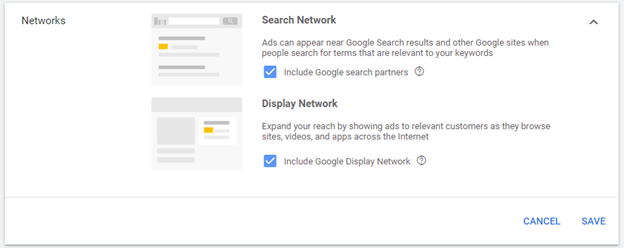30-second summary:
- Google networks can be tricky when deciding which ones are best for your goals and budget
- Three tips that will help you to utilize the networks strategically
- You first need to understand the difference before selecting a network
- Clean data is key when analyzing performance, so it is best to keep network targeting separately
- Where a user is at in the conversion funnel will tell you if the network brings conversions
- By having two different campaigns that are network specific, you will be able to properly target your audience with clear messaging while being able to access key data points quickly and accurately
There are two networks within Google AdWords – display and search. When you set up a campaign for the first time, you may notice an option to add either one of these within the settings.
The search network ads appear on Google’s search results page[1], and the display network ads appear on sites, videos, and apps. But what looks like a good idea to get more visibility, may not help you in the end when measuring performance.

To reap the benefits of both search and display, you need to be strategic about how you are targeting users on these platforms. Here are three tips for utilizing the networks within Google AdWords:
Tip #1: Know the difference
Display select versus display network are different even though the listing of display network in your settings can be a little misleading. The display select is a hybrid campaign model. While you can take your search network ads to the next level by adding them to display, it is not ideal for tight budgets.
By nature, the display network expands its reach to a broader audience. When you add this

